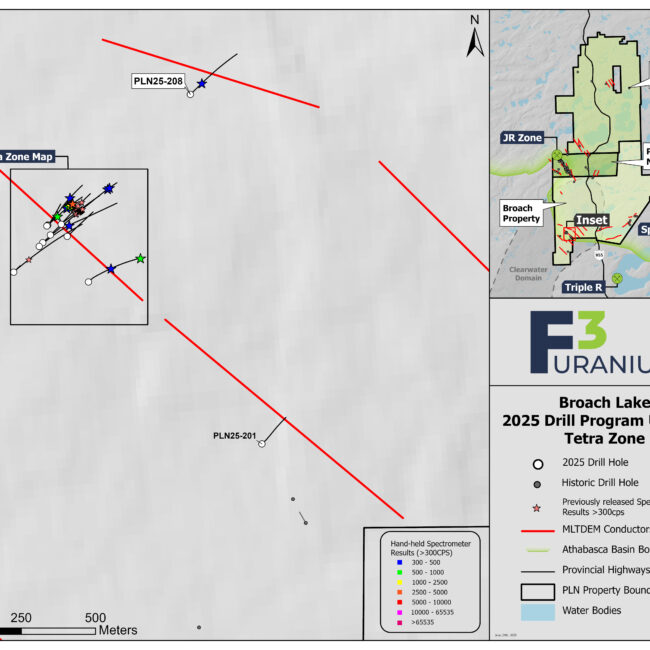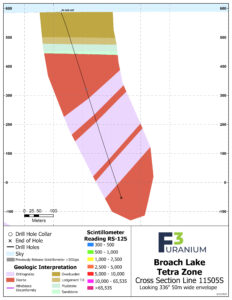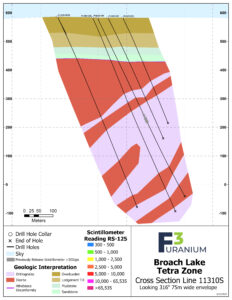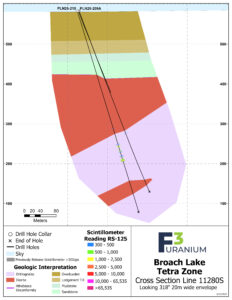PLN AREA PROJECTS
Broach
key highlights
Tetra Zone Discovery
In Spring of 2025, drillhole PLN25-202 initially encountered six distinct zones of anomalous radioactivity, with readings ranging between 300 cps and 720 cps over a 90m downhole. Follow-up hole PLN25-205 then intersected radioactivity over a total of 33.0m including 0.56m of high radioactivity (>10,000 cps) with a peak of 37,700 cps at 398.34m.
Location and access
The Broach property is located approximately 5-15 km south of the JR zone discovery at PLN. In early July, F3 Uranium redefined the boundaries of the legacy PLN Property, splitting it into three distinct areas: PLN, Minto, and Broach. This was done to allow thorough exploration of each property’s potential, highlighting F3 Uranium’s strategic exploration efforts. On January 22, 2024, F3 Uranium acquired CanAlaska Uranium Ltd.’s Patterson West property, merging it with the Broach Lake Property resulting in 17 mineral claims with an area of 19,023 hectares, easily accessible via Highway 955 and straddling the edge of the Athabasca basin.
Geophysics
Initial exploration in 2014 by F3 Uranium on the east side of the property included 31 km of ground Moving Loop Electromagnetics and 34 km of ground DC Resistivity surveys to define conductors and possible alteration zones. Attention returned to the Broach Lake area in 2022 with further ground geophysics highlighting multiple high priority conductors. In fall 2024 a ground gravity survey was completed on the western side of the property. In winter 2025 F3 Uranium completed 42km of Moving Loop Electromagnetics on the western side of the property (PW Area). A total 6 ground conductors were identified for drill targeting.
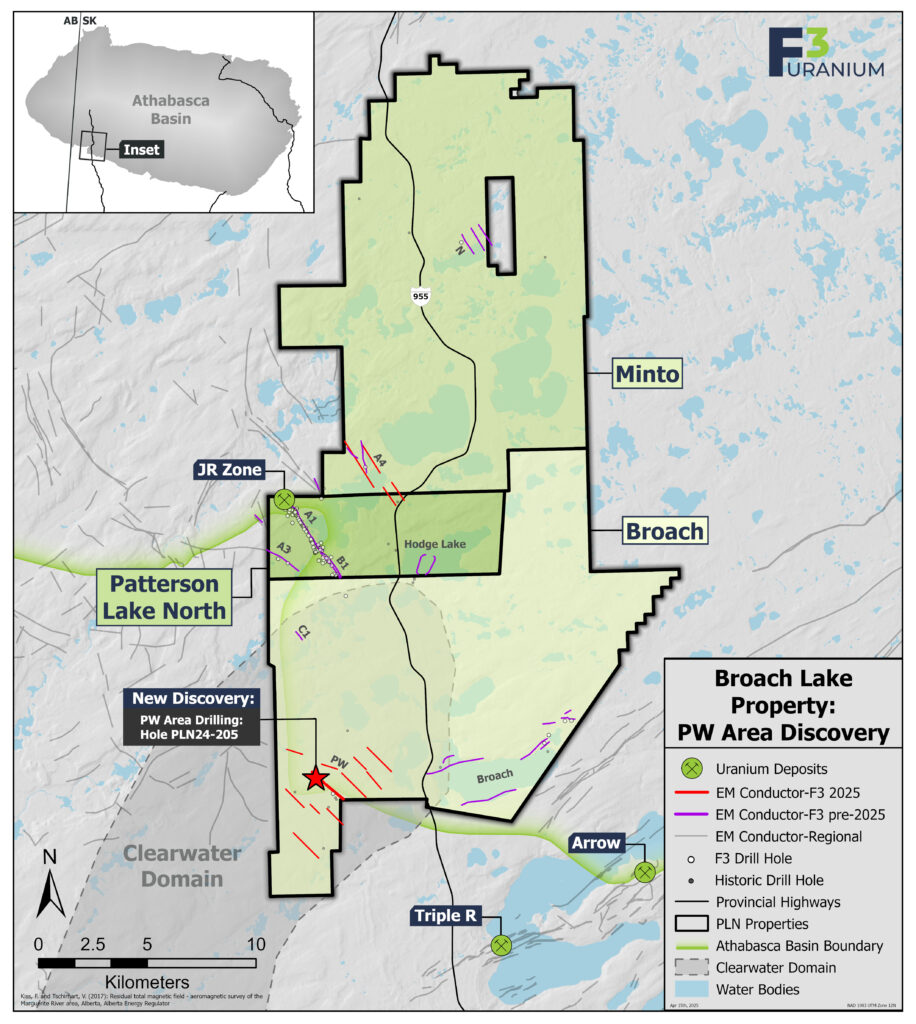
Uranium Exploration Potential
The property is located 5-15 km south of the JR zone and just 7 km north of Paladin’s Triple R deposit and NexGen’s Arrow deposit. The property straddles the estimated Athabasca Basin boundary. Limited drilling has intersected anomalous radioactivity and multiple occurrences of dravite and elevated boron. Geophysics has identified multiple high priority conductor and resistivity targets under Broach Lake, some of which remain untested by drilling.




